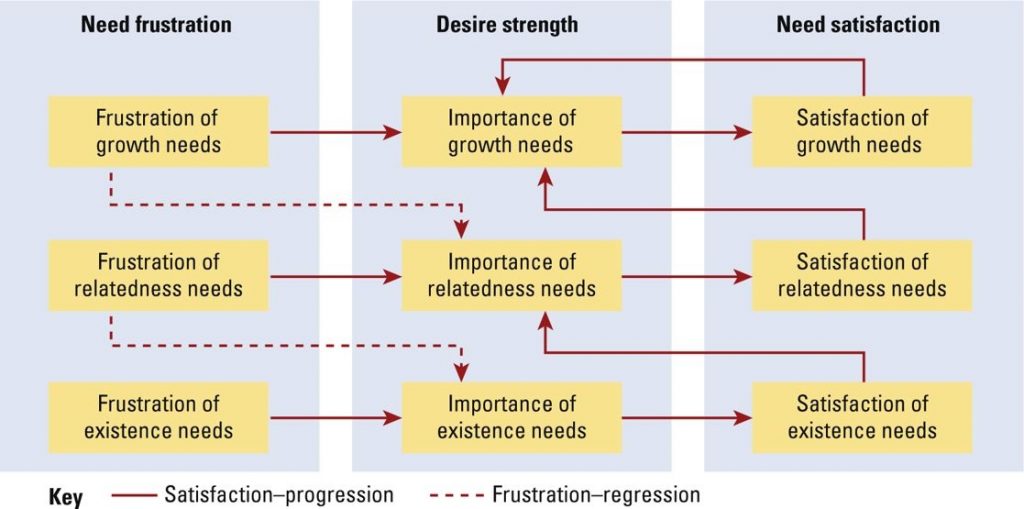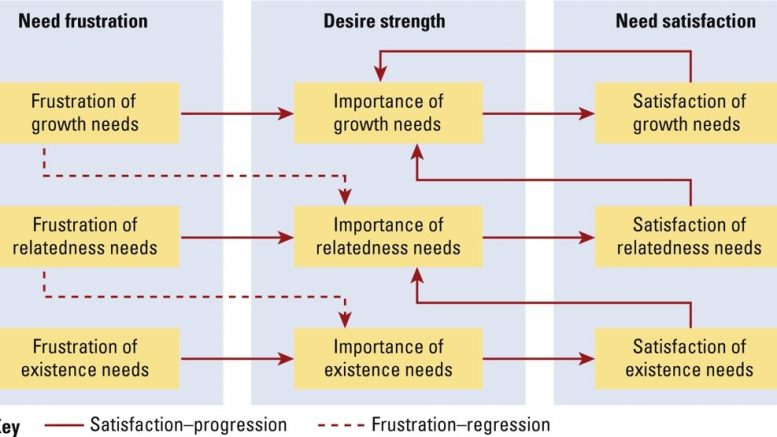Clayton Alderfer developed a modification of Maslow’s hierarchy with the ERG theory. ERG theory is more flexible than Maslow’s theory in three basic respects.
Firstly, the theory collapses Maslow’s five need categories into three: existence needs relate to a person’s desire for physiological and material well being; relatedness needs represent the desire for satisfying interpersonal relationships; and growth needs are about the desire for continued personal growth and development.
Secondly, while Maslow’s theory argues that individuals progress up the hierarchy as a result of the satisfaction of lower-order needs (a satisfaction–progression process), ERG theory includes a ‘frustration–regression’ principle, whereby an already satisfied lower-level need can become activated when a higher-level need cannot be satisfied.
Thus, if a person is continually frustrated in their attempts to satisfy growth needs, relatedness needs will again surface as key motivators.
Thirdly, according to Maslow, a person focuses on one need at a time. In contrast, ERG theory contends that more than one need may be activated at the same time.
ERG theory categorises needs into existence, relatedness and growth needs.
Existence needs are about the desire for physiological and material wellbeing.
Relatedness needs are about the desire for satisfying interpersonal relationships.
Growth needs are about the desire for continued personal growth and development.

Source: Marc J Wallace, Jr, and Andrew D Szilagyi, Jr, Managing behavior in organizations (Glenview, IL: Scott, Foresman, 1982).

Be the first to comment on "Alderfer’s ERG theory"